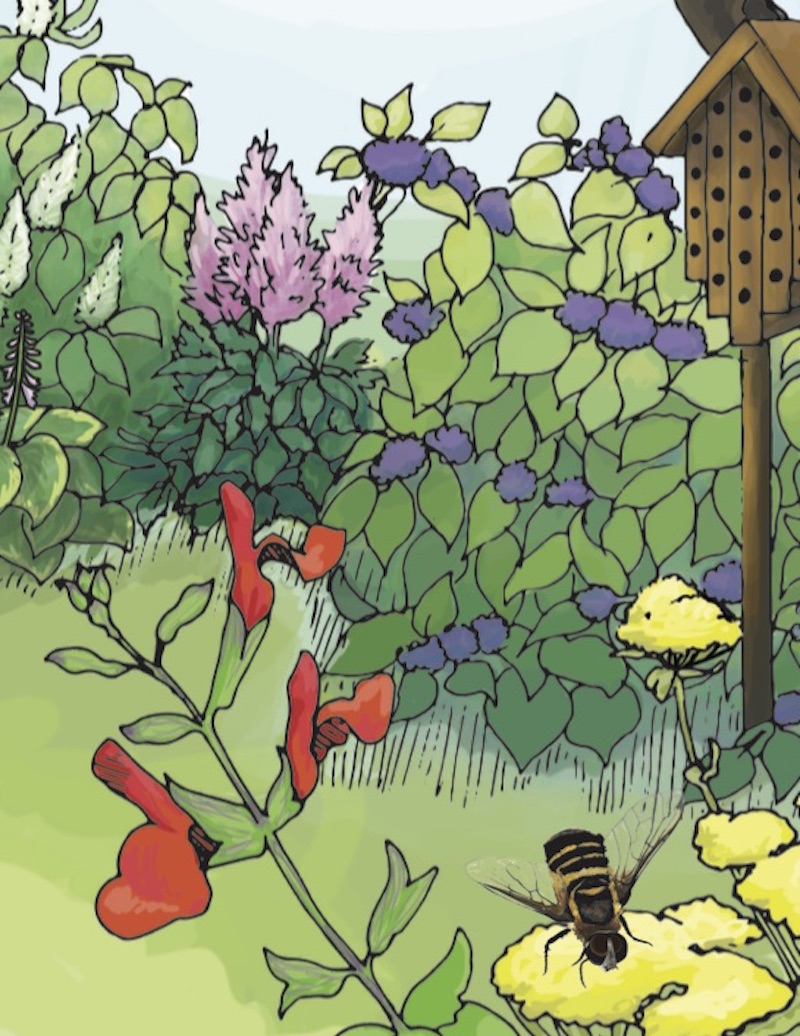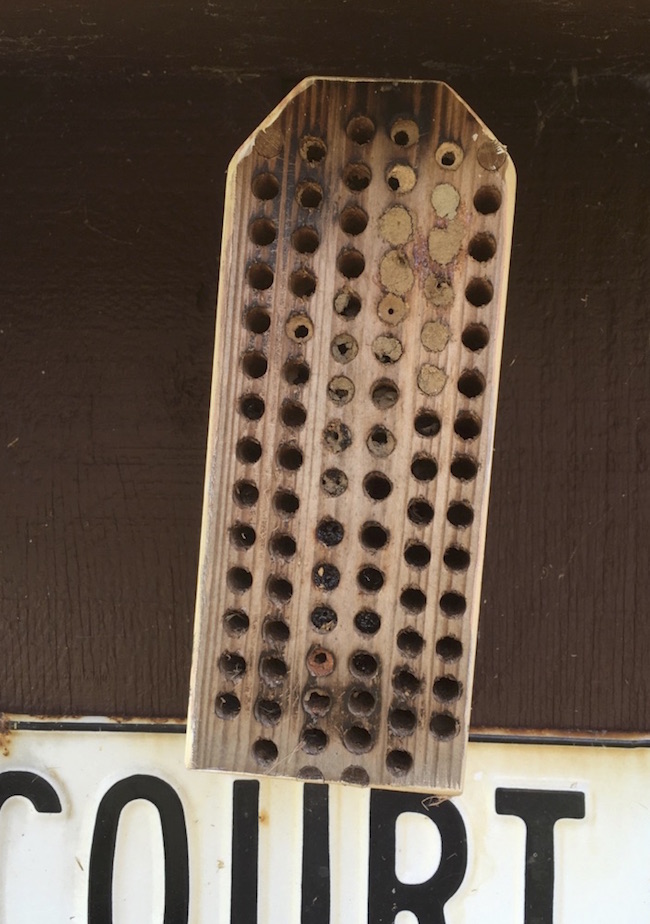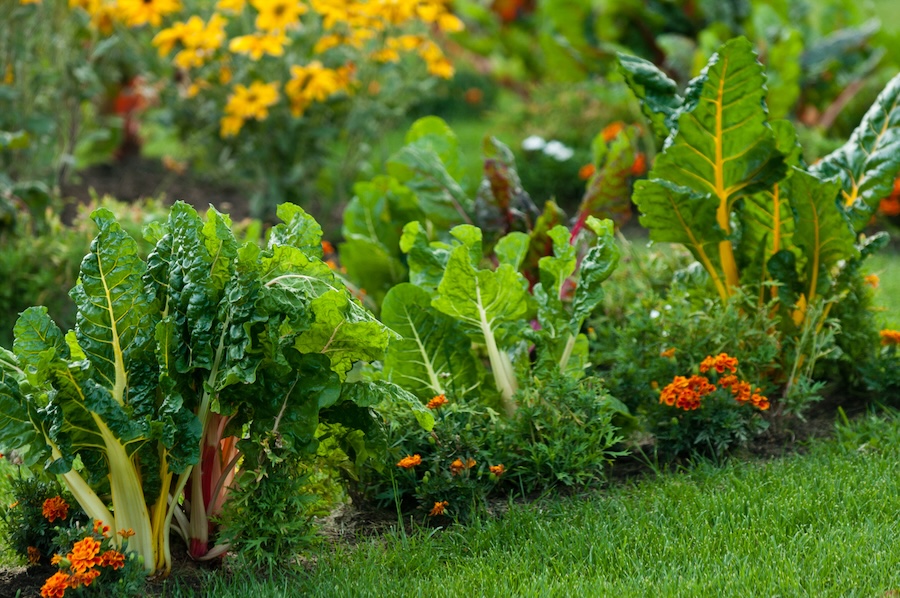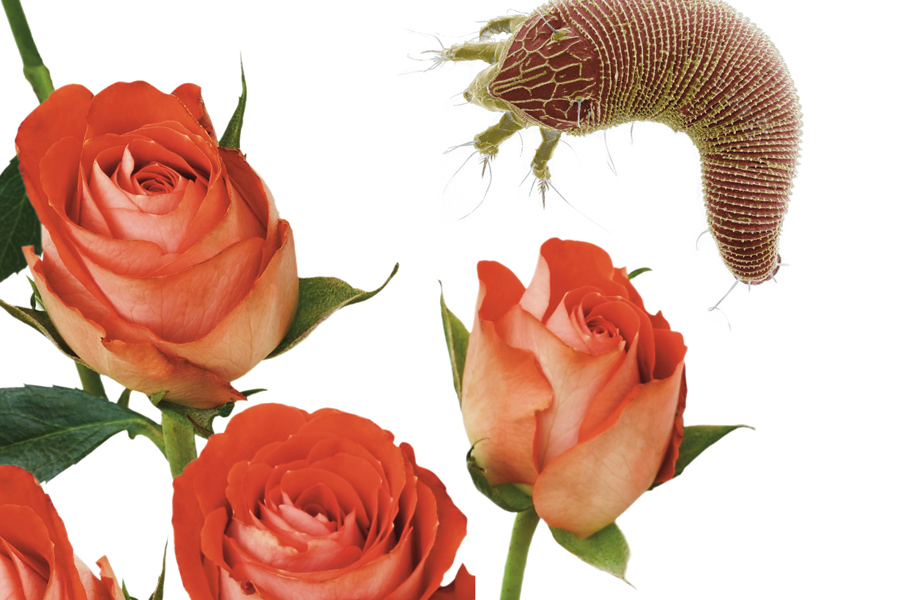Pollinators are essential to the production of native plants and food crops. To help pollinators like bees and butterflies do their job of moving pollen, home gardeners need to provide habitats that provides water and shelter.
Pollination is the process by which pollen is moved from male to female flower parts. Pollination is necessary for fruit and seed development in plants. Some plants are self-pollinated or wind-pollinated. However, most plants depend on animals for pollination.
A pollinator is an animal that transfers pollen from one flower to another flower. More than 90 percent of flowering plants depend on pollinators. The value of pollination services in Georgia is estimated at $360 million.
To survive, pollinators need more than just flowers as sources of pollen and nectar. They also need water, bare ground for nesting, shelter and nesting materials. In natural areas, these items are readily available. But in urban and residential areas, these resources are often limited. Landscapes with manicured turfgrass and ornamental shrubs, while very attractive, are often not welcoming habitats for pollinators.
To help pollinators thrive in home landscapes, homeowners need to provide them with water for drinking, evaporative cooling and reproduction purposes. If there are no ponds or streams nearby, add a couple of birdbaths or shallow dishes of water in numerous locations to provide fresh, clean water for pollinators. Change the water often or unwelcome mosquitoes will use it to lay eggs. Treating birdbaths with Bacillus thuringiensis (B.t.) “dunks” are a safe mosquito control alternative that will not hurt pollinators. Attractive pebbles or marbles can be added to birdbaths to give pollinators a safe spot to land.
When we think of pollinators, we often picture commercial beehives, but many bee species nest underground and are solitary, meaning only one bee per nest. Bumblebees, sweat bees, miner bees and cellophane bees are all native bees that nest underground. Ground-nesting bees prefer soil that is sandy and dry. Leaving drier patches of your landscape bare of plants will provide important nesting habitats for bees that nest underground.
Wood-nesting bees, such as mason bees, carpenter bees, orchard bees and leafcutter bees, ideally use dead tree trunks or “snags” for nesting sites. Leaving dead tree trunks in your landscape is likely not desirable in residential areas, but an artificial habitat can be provided.
Nesting boxes, also called bee condominiums, can be fun and decorative additions. Designs for nesting boxes can be simple or very creative. All that is needed for a nesting box is a piece of untreated wood with holes of various sizes, up to 1/3 of an inch in diameter. Untreated lumber or unused firewood are good options for nesting boxes. The box frames can be painted, as long as the surface the bee approaches is left bare. Other nesting materials that can be provided include bundles of soft-centered plant stems, old bamboo stakes, or purchased cardboard “bee tubes.” Place nesting materials out in early spring in a sheltered location. Secure nesting boxes so they do not sway in the wind.
Another way to create a pollinator-friendly landscape is to plant a variety of flowers that bloom at different times of the year. Pollinators need pollen and nectar from flowers, but not every flower will be used by pollinators. Lantana, zinnias, cosmos, bee balm, coneflowers, catmint, salvias, black-eyed Susans and milkweeds are some of the herbaceous plants that will attract pollinators.
Larger plants, such as flowering trees and shrubs, are also beneficial for pollinators. Shrubs that provide pollen and nectar include American beautyberry, glossy abelia, lacecap hydrangea, sweet spire and fragrant tea olive. Pollinator-friendly trees, such as black locust, chaste tree, sumac, cherry, crabapple, crape myrtle, catalpa, tulip poplar, eastern redbud and red maple can also be incorporated into landscapes.
Adding food, water, shelter and nesting habitats to developed residential areas will help promote pollinator health. Follow these tips from the University of Georgia Cooperative Extension and keep your eyes open for pollinator visitors. You will likely see honeybees, mason bees, bumblebees, butterflies, hover flies, hummingbirds and many more.
For more information, see UGA Extension Bulletin 1456, “Eco-Friendly Garden: Attracting Pollinators, Beneficial Insects, and Other Natural Predators,” available online at extension.uga.edu/publications.
This article is part of UGA Extension’s “Trees for Bees” project aimed at educating adults and children on the benefits of installing plants that attract pollinators.





